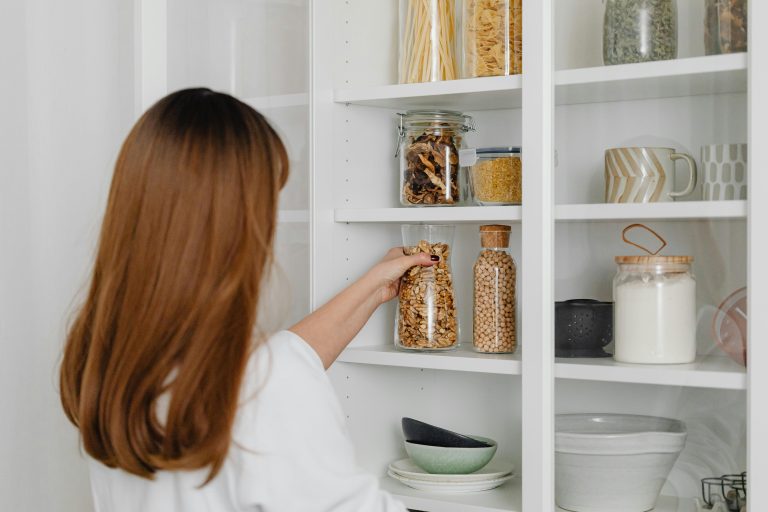Home design trends come and go, but a well-designed home is one that stands the test of time. Whether you’re remodeling your forever home or making strategic updates to increase resale value, the smartest approach is to choose home improvements that age gracefully—both in style and functionality.
This doesn’t mean everything has to be ultra-traditional or boring. In fact, some of the most timeless designs are fresh, functional, and stylish. The key is to think long-term: What will still look great and work well 10, 20, or even 30 years from now?
Here’s how to invest in upgrades that will look just as good tomorrow as they do today.
1. Choose Timeless Over Trendy
Trends are fun, but they don’t last. Shiplap walls, bold tile patterns, and ultra-modern finishes might feel exciting right now—but in a few years, they could date your space.
Instead, focus on classic design elements that have stood the test of time:
- Neutral color palettes like whites, grays, and soft earth tones
- Natural materials like wood, stone, and metal
- Simple lines and shapes that won’t look “overdesigned” in the future
You can always bring personality into a room with easily replaceable elements—pillows, rugs, light fixtures, or wall art—rather than permanent fixtures like tile or cabinetry.
2. Invest in Quality Materials
Durability is just as important as style. The cheapest option might save you money upfront, but poor-quality materials can wear out, fade, chip, or break long before their time.
Look for high-quality materials that offer:
- Long life spans
- Low maintenance
- Timeless beauty
For example:
- Solid hardwood flooring may cost more than laminate, but it can be refinished multiple times over decades.
- Quartz countertops offer the elegance of stone with better durability and lower upkeep than marble.
Choosing the right materials might cost more initially, but they’ll save you time, money, and hassle in the long run.
3. Design With Flexibility in Mind
Your needs today may not be the same tomorrow. Whether it’s growing your family, aging in place, or just shifting preferences, flexible spaces make it easier to adapt without needing a full redesign.
Ideas for future-proofing your home:
- Open layouts that allow for rearranging furniture or redefining space
- Multi-functional rooms like a guest room that doubles as a home office
- Accessible features like wider doorways, zero-step entries, and lever door handles that accommodate aging or mobility needs
You don’t need to make your home look like a hospital to plan for the future—subtle, thoughtful design choices can keep your home usable and stylish for years.
4. Focus on the Kitchen and Bathroom
If you’re going to splurge, these are the rooms to do it in. Kitchens and bathrooms are not only high-traffic areas but also key drivers of home value. Plus, they’re the spaces most susceptible to looking outdated fast.
To make these rooms age gracefully:
- Stick with classic cabinets in simple styles and neutral finishes
- Avoid ultra-trendy backsplash tile—opt for subway tile or natural stone instead
- Choose modern but not overly stylized fixtures and appliances
- Add thoughtful touches like under-cabinet lighting, soft-close drawers, and quality hardware
These improvements won’t just look good now—they’ll still feel fresh and functional years down the road.
5. Go Green for the Long-Term
Sustainable design isn’t just a buzzword—it’s a smart, long-term investment. Energy-efficient improvements lower utility bills, reduce your environmental impact, and appeal to future buyers.
Sustainable upgrades that age well include:
- Energy-efficient windows and insulation
- LED lighting and smart thermostats
- Solar panels (with proper placement and warranties)
- Water-saving fixtures in bathrooms and kitchens
Even choosing low-VOC paints and eco-friendly flooring can make a difference in creating a healthier, more future-friendly home.
6. Keep Curb Appeal in Mind
First impressions last, and your home’s exterior deserves just as much attention as the inside. Outdoor upgrades should be designed to weather the seasons and remain attractive as the years roll by.
Focus on:
- Durable siding and roofing materials that resist wear and fading
- Simple landscaping with native or low-maintenance plants
- Timeless paint colors like white, gray, navy, or taupe
- Well-designed entryways, porches, or outdoor lighting that add both function and charm
Your home’s exterior sets the tone—it should be inviting and classic, not trendy or high-maintenance.
7. Plan for Storage (You’ll Always Need It)
As families grow and years pass, one truth remains: You’ll never regret having too much storage. Built-ins, extra closets, attic access, or garage cabinetry may not be flashy, but they’re essential to a functional home.
Design smart storage that:
- Blends seamlessly into your home’s look
- Can be adjusted or expanded over time
- Uses space efficiently, especially in small or awkward areas
Well-thought-out storage contributes to a clean, clutter-free home—something that never goes out of style.
Final Thoughts: Build a Home That Lasts
Designing for the long haul means taking a thoughtful, intentional approach to every upgrade. Instead of chasing fads, focus on what will endure—classic design, quality materials, functional layouts, and sustainable practices.
Your home should evolve with you. And with the right design choices, it will.
So whether you’re planning a small update or a full renovation, remember this: true style is timeless—and your home can be too.


